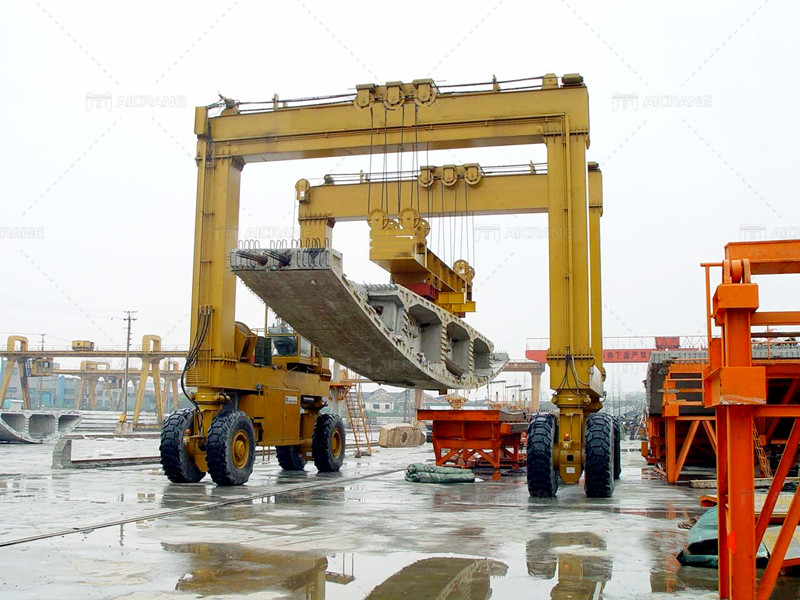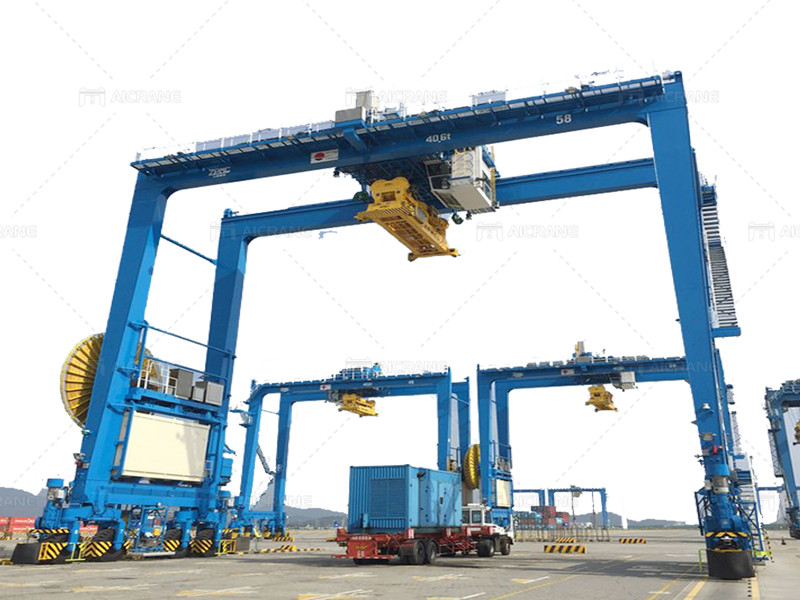Operating a rubber gantry crane requires careful attention to safety, efficiency, and proper maintenance to ensure smooth operations and maximize productivity. Here are six essential tips for operating a rubber gantry crane effectively:

Pre-Operation Inspection
Before each use, conduct a thorough pre-operation inspection of the rubber gantry crane to ensure that all components are in good working condition. Check for any signs of wear, damage, or malfunction, including the crane structure, wheels, brakes, hoisting mechanisms, electrical systems, and safety devices. Pay particular attention to the condition of the rubber tires and ensure they are properly inflated and free from cuts or punctures. Address any issues promptly to prevent accidents or downtime during operation.
Load Capacity and Balance
Always adhere to the rated load capacity of the rubber gantry crane and never exceed its lifting capacity. Before lifting any load, carefully assess its weight and dimensions to ensure that it falls within the crane’s safe working limits. Distribute the load evenly and securely to maintain proper balance and stability during lifting and movement. Avoid overloading or uneven loading, as it can compromise the crane’s stability and lead to accidents or damage to the equipment.
Safe Lifting and Movement Techniques
Practice safe lifting and movement techniques when operating the rubber mobile gantry crane to minimize the risk of accidents and injuries. Use proper rigging equipment, such as slings, shackles, and hooks, to secure the load securely before lifting. Ensure that the load is lifted smoothly and steadily, avoiding sudden movements or jerks that could destabilize the crane. Keep the load close to the ground and avoid swinging or swaying during lifting and movement to maintain control and stability.

Clear Communication and Coordination
Maintain clear communication and coordination with other personnel involved in the lifting operation to ensure safety and efficiency. Establish clear hand signals or verbal commands for communication between the crane operator and ground crew. Use radios or other communication devices to maintain contact with personnel in different areas of the worksite. Coordinate movements and activities with other cranes, vehicles, and equipment to prevent collisions and ensure smooth operations.
Adverse Weather Conditions
Be vigilant and cautious when operating the rubber gantry crane in adverse weather conditions, such as high winds, rain, snow, or fog. Assess the weather conditions before starting operations and consider postponing or suspending work if conditions pose a safety risk. Take appropriate precautions, such as securing loose items, reducing the crane’s speed, or limiting operations in hazardous weather conditions. Monitor weather forecasts and stay informed of changing conditions to make informed decisions regarding crane operations.
Routine Maintenance and Inspections
Implement a routine maintenance program for the rubber gantry crane to keep it in optimal working condition and prevent premature wear or failure. Conduct regular inspections of all components, including mechanical, electrical, and hydraulic systems, to identify any signs of wear, damage, or malfunction. Lubricate moving parts, tighten loose fasteners, and replace worn or damaged components as needed to ensure reliable performance. Keep detailed maintenance records and schedule periodic inspections by qualified technicians to identify and address any potential issues before they escalate.
In conclusion, operating a rubber gantry crane requires adherence to strict safety protocols, proper load handling techniques, clear communication and coordination, vigilance in adverse weather conditions, and routine maintenance and inspections. By following these tips from reliable gantry crane manufacturer, crane operators can ensure safe, efficient, and reliable operations while minimizing the risk of accidents, injuries, and equipment downtime.